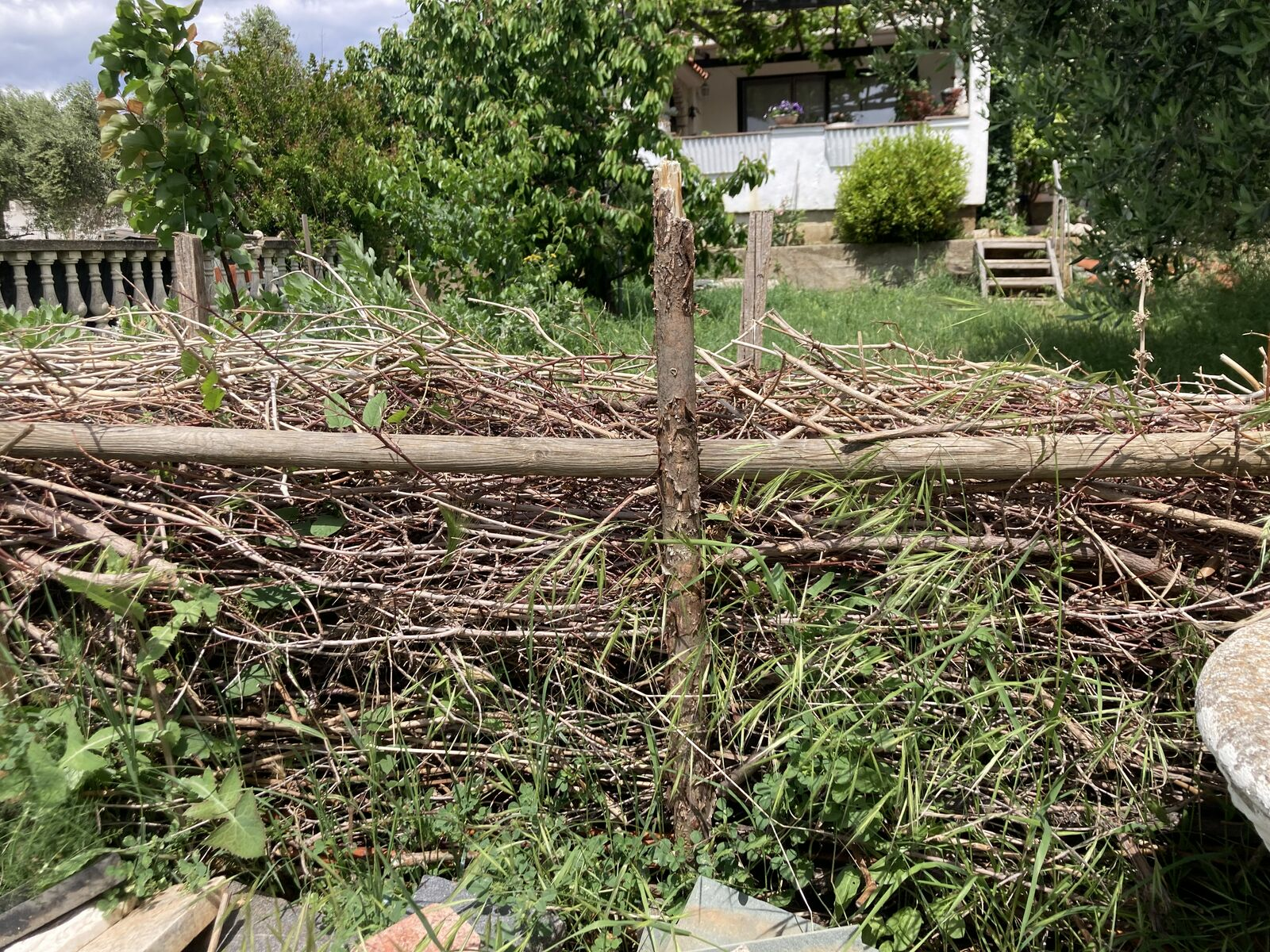
Deadwood Hedge: A Guide to Creating a Benjes Hedge
A Benjes hedge or deadwood hedge is a great way to increase biodiversity in your garden. You can provide a habitat and food for numerous animals and attract them to your garden. How you can create and plant a deadwood hedge and what you need to consider, you will learn here in the article.
This Article Contains:
- Benjes Hedge: What Is It?
- Deadwood Hedge in the Garden: Advantages & Benefits
- Deadwood as Habitat: Which Animals Benefit From the Benjes Hedge?
- Are There Any Disadvantages With the Benjes Hedge?
- Create Deadwood Hedge: A Guide
- Planting Your Deadwood Hedge: What Plants Are Suitable?
- Care Tips for Your Deadwood Hedge
- Frequently Asked Questions About How to Create a Benjes Hedge
Quick Overview
Create a Benjes Hedge: Location & Material
- Location: You can place your Benjes hedge in a location that suits you as a windbreak, privacy screen or border. It is best not to place it on compacted soil and in a semi-shaded location.
- Material: A Benjes hedge consists of dead wood. You can use cuttings from your garden. Use only native woods and no tropical woods!
- Planting: Native ground cover, climbing plants, trees and shrubs, but also vegetable plants are suitable for planting a Benjes hedge.
- Examples: Aster, wild garlic, blackberry, ivy, rock pear, hazelnut, dog rose, raspberry, St. John's wort, marjoram, mallow,...
Building Instructions for Your Deadwood Hedge
- Drive stakes into the ground to limit the shape: In this case, the hedge should be at least 1 to 1.5 m/1.1 to 1.6 yd high and 0.5 to 1.5 m/0.5 to 1.6 yd wide to achieve the desired effect. Every 1 to 2 m/1.1 to 2.2 yd, another stake goes into the ground.
- Fill: Coarse cut first, then fine cut to fill in the gaps. On top add leaves and green cuttings.
Benjes Hedge: What Is It?
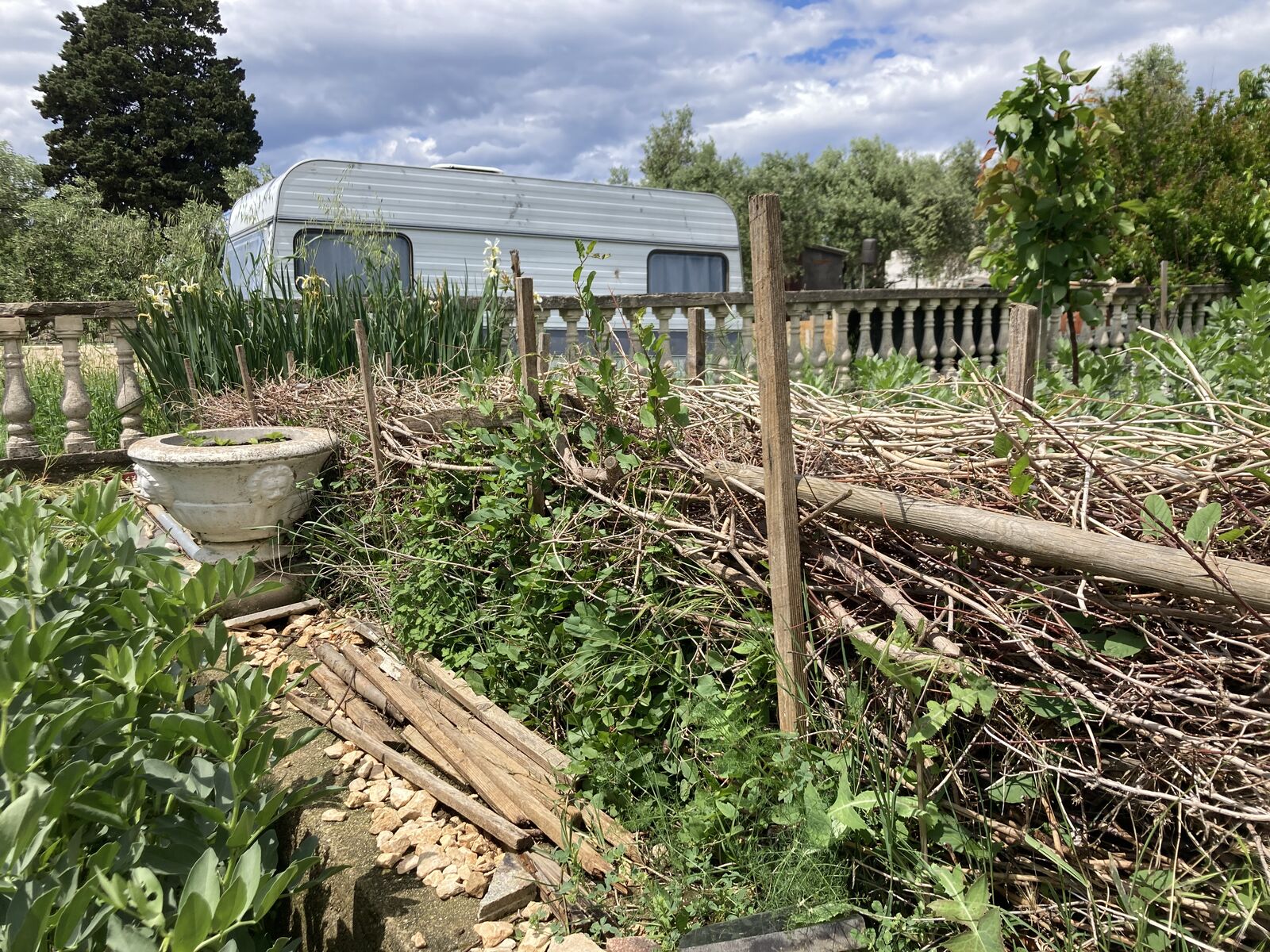
A Benjes hedge is a hedge made of deadwood and is therefore also known as a deadwood hedge. The Benjes hedge got its name from the landscape gardener Hermann Benjes, who re-established this type of hedge in the 1980s. Benjes was very keen on naturalistic landscaping that took into account natural cycles. However, this method is by no means new and was used in agriculture before that to establish boundaries.
A deadwood hedge is, as the name suggests, a hedge that consists of piled up deadwood. Deadwood is old, dead wood from trees and shrubs that occurs naturally as woody plants age. During a regeneration pruning, this wood is removed and can continue to be used in a Benjes hedge. This makes it a wonderful way to recycle your prunings from fruit trees and hedges and close loops. At the same time, it's a way to maintain and enhance the natural ecosystem in your yard. Dead wood is part of the material cycle in your garden. If you just dispose of it in a landfill, you'll lose super many nutrients. Not only that, but deadwood is also a valuable habitat for numerous animals and plants. With a Benjes hedge you promote biodiversity in your garden.
Deadwood Hedge in the Garden: Advantages & Benefits
Deadwood naturally occurs in a forest as the trees age. If a forest is left natural, this deadwood accumulates on the ground. Deadwood is integrated into the forest's ecosystem because nature knows no waste and functions in cycles. It contains many substances such as carbon in the form of starch and sugars, vitamins, amino acids and minerals that are important for plant growth and soil. These substances are released during decomposition by the various forest dwellers and thus also benefit the soil and plants. At the same time, dead wood protects the soil from erosion and water evaporation. Thus, water is stored in the soil longer, which positively affects the microclimate. It also promotes the build-up of humus and thus improves the soil structure.
Unfortunately, in many commercial forests, this deadwood is removed for timber production. However, this is disastrous for some forest dwellers , as many find food, shelter or a nesting place in the old wood - from tiny microorganisms, fungi and bacteria to insects and birds. Deadwood is thus a valuable habitat that contributes to a wide range of biodiversity. The more different habitats such as benje hedges, ponds or dry stone walls you offer in your garden, the more plants and especially animals you attract. Thus, numerous beneficial insects come into your garden, which have a regulating effect on so-called pests, whereby you usually have fewer problems with an infestation. Thus, deadwood has a great ecological value, which you can also use in your garden.
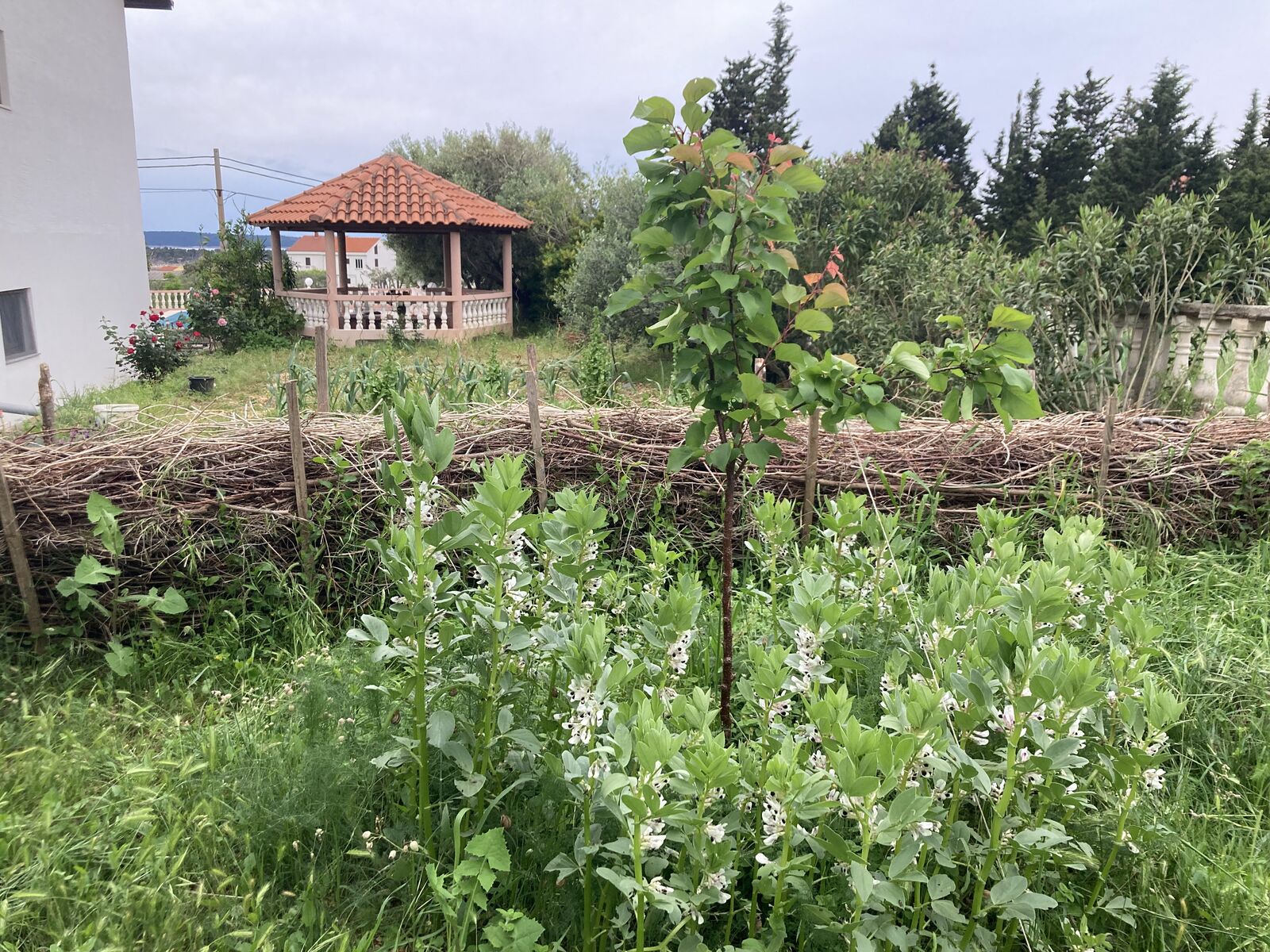
Benjes Hedge as a Fence and Border
You can create these deadwood hedges as a design element in your garden and use them to set boundaries. For example, you can create them as windbreaks or privacy screens and change the microclimate on site. In a classic Cottage Garden, for example, benje hedges are often used as borders for beds or other areas. But also in a Permaculture Garden you can use them to delineate different biotopes and at the same time create connections between them. Indeed, hedges made of deadwood are a popular element in permaculture design. Benjes hedges are ecologically intertwined on several levels, so numerous organisms benefit. On the one hand, microscopic, small garden inhabitants: fungi, bacteria and other microorganisms. On the other hand, insects are also attracted, which in turn attract birds. At the same time, birds also find shelter and a place to nest.

Need Further Advice?
To exchange ideas with other gardeners and benefit from their experiences, you can visit our Fryd community. Perhaps someone has already built a deadwood hedge and can give you some tips.
Join Community HereDeadwood as Habitat: Which Animals Benefit From the Benjes Hedge?
Deadwood is a popular habitat and numerous forest and garden inhabitants feed on it. A wide variety of creatures are involved in the decomposition of wood and also work together here to break it down. Initially, the bark is very hard and impermeable. This is where boring beetles or woodpeckers come into play, damaging the bark and thus breaking up the wood. Now wood-decomposing organisms such as fungi, bacteria, lichens, mosses and beetles can colonize the wood. However, fungi in particular play a very important role here, as they penetrate the wood and soften it. This makes the deadwood particularly attractive for other insects. Many wood-dwelling beetles such as the longhorn beetle or bark beetle and other insects such as wood bees or ladybugs that live on and in wood are attracted. As decomposition proceeds, a Benjes hedge is a perfect place to live, nest, or overwinter. Many larger animals such as birds, bats, hedgehogs, dormice, squirrels & co find shelter here. If you have a pond nearby, the dead wood also attracts amphibians and reptiles such as toads, wood lizards or crawlers, which use it as a nesting site in spring and as a hiding place in summer. Once parts of the wood have completely decomposed, invertebrates such as mites, worms and woodlice as well as fungi and bacteria settle in the remains. Earthworms & co. now do their part, creating humus and plant-available nutrients. New plants can now spread on the fertile soil and the surrounding crops also benefit from these nutrients and humus.
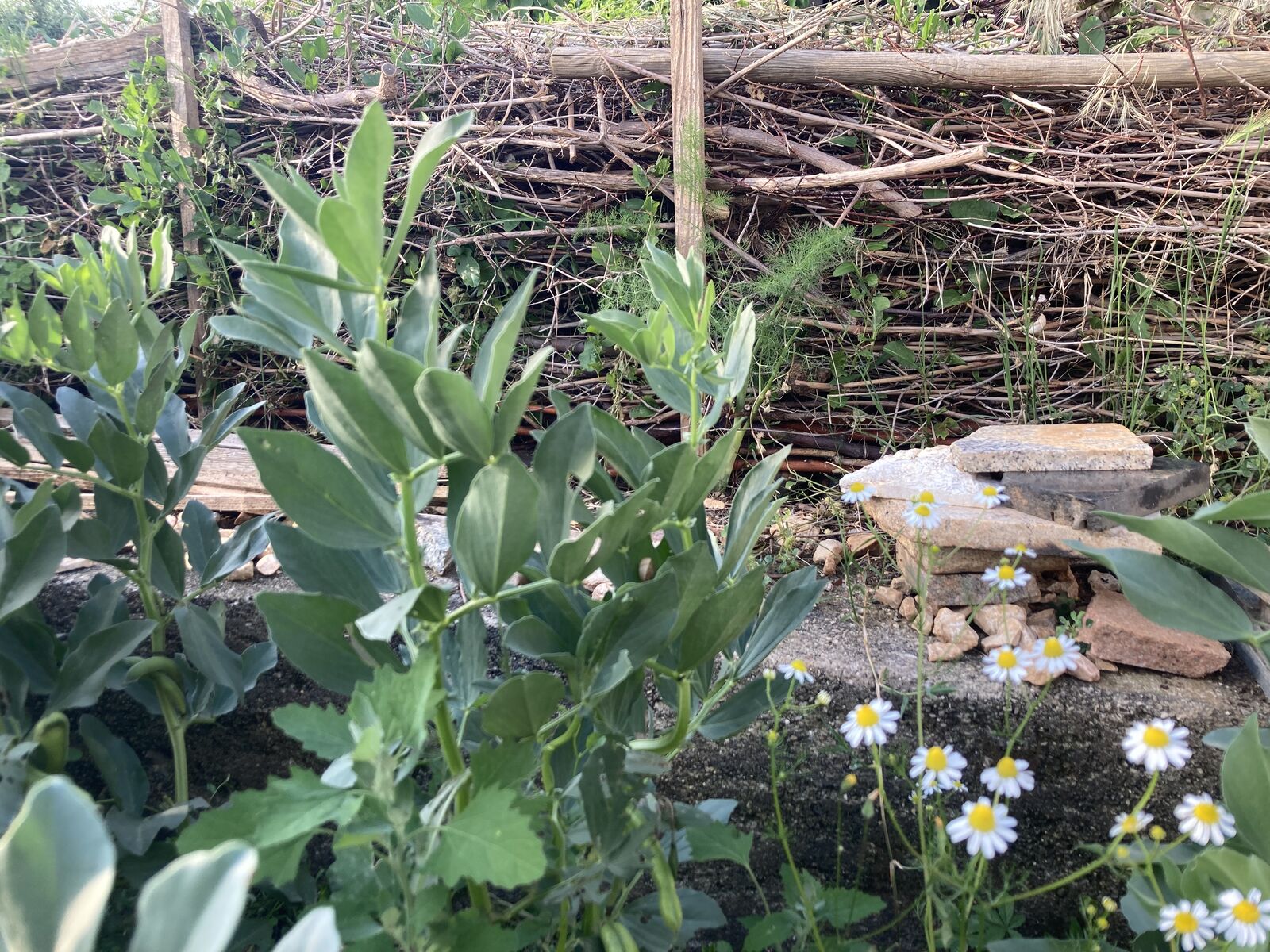
Many animal species that depend on deadwood and whose habitat is wood are endangered species. Therefore, it is even more important to spread and offer these habitats again. As you might imagine, this is of great importance for the preservation of biodiversity. Removing deadwood breaks the ecosystem cycle and destroys rare habitat.
Are There Any Disadvantages With the Benjes Hedge?
- The Benjes hedge attracts numerous animals to your garden, not all of which are beneficial to gardeners. Insects and animals potentially harmful to your plants, such as mice, also like the thicket. This can become a problem in the garden when growing vegetables. Tips on How to Get Rid of Voles in the Garden can be found in this article.
- In addition, you need a lot of space for a Benjes hedge compared to a planted hedge. In a small garden it is already tight, but you can simply establish a Benjes hedge instead of a garden fence, for example.
- In particularly dry regions with fire danger you should think twice before planting a Benjes hedge. Especially during periods of low rainfall, it poses such an increased fire risk.
- Like any hedge, the Benjes hedge also needs maintenance. However, it may be severely damaged by weather conditions. Therefore, it is important that you regularly add wood.
- On very nutrient-rich, nitrogen-rich soils, competitive plants such as stinging nettles can become established. Here there is a risk of creating a species-poor hedge. However, you can help and plant other native plants.
Create Deadwood Hedge: A Guide
In a natural garden can not be missing a Benjes hedge. Below you will find instructions for creating a deadwood hedge.
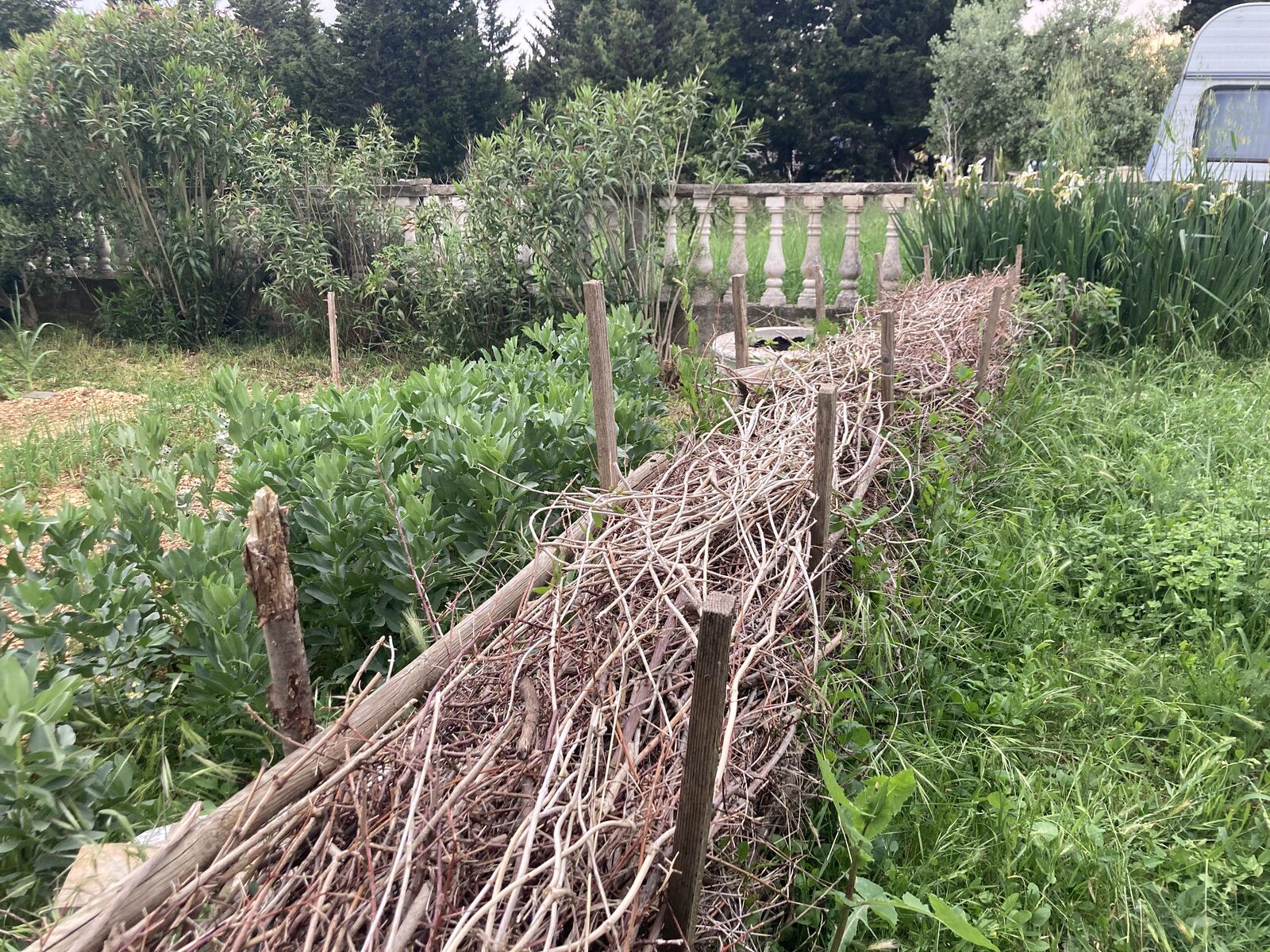
The Right Location for Your Deadwood Hedge
You can place your deadwood hedge in any location. Just make sure that the soil underneath is not compacted and well-drained to avoid waterlogging. In addition, on a compacted soil, the decomposition processes cannot take place as well and quickly, and rotting takes much longer. There is also a risk of rotting. A site directly under a deciduous tree that sheds its leaves in the fall is also not ideal. The fallen leaves create a layer that may prevent other plants from colonizing.
To encourage a lot of diversity on your Benjes hedge, it is helpful to have one sunny side and one (semi-)shady side. However, this orientation is not mandatory and you can place them where you just need a boundary. It is possible to place it as a natural windbreak or privacy screen. Of course, if you want more biodiversity in your garden, you can also create a Benjes hedge just like that, without placing a border. However, when planning, it is helpful to keep in mind that the microclimate on site will be affected. Because a Benjes hedge compensates for temperature fluctuations, it is especially beneficial as a border for heat-loving crops.
Material: What Wood for Your Benjes Hedge?
You can use any clippings from your tree or shrub trimmings. Generally, though, the thicker the deadwood, the more abundant and the more food the garden inhabitants will find. In addition, different types of wood (hardwood, softwood or coniferous) attract different animals. Indeed, some creatures specialize in diverse woods, while others are content with what is there. So for the greatest diversity, different wood in different sizes and stages of decomposition is best. However, please use only native trees and shrubs for your Benjes hedge. There is enough native wood that you can use for it. This is integrated into our ecosystems and native animals, fungi and other creatures can do something with it. Using tropical woods would be absolutely not ecological. Moreover, their composition is different and they take longer to decompose in our latitudes. If you use non-natural wood on humus-rich soils, you risk deteriorating the quality of the soil and permanently changing its composition. Also, use only natural wood and do not use treated wood in your Benjes hedge. This could cause toxins to enter the soil. These woods are then a case for the landfill or you build something new from it.
Create a Benjes Hedge: Structure
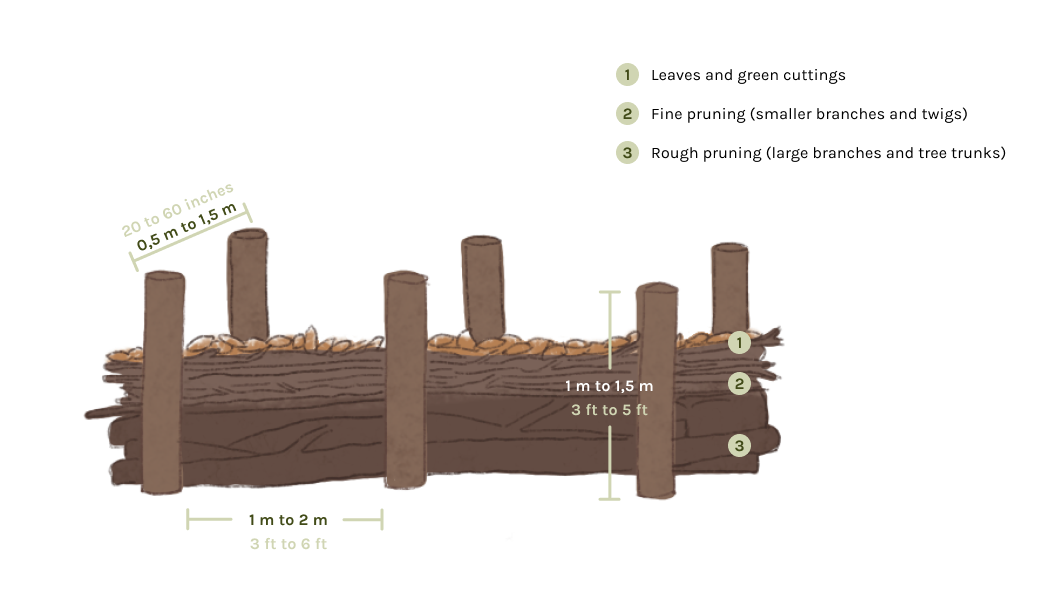
Creating a Benjes hedge is simple and quite fast. Once you have determined your location, you should think about the shape you want to create the hedge. To limit the shape, you drive stakes into the ground, in which you can later pile the deadwood. In order for your Benjes hedge to achieve the desired effect, it should be between 0.5 and 1.5 m/0.5 and 1.6 yd wide and at least 1 to 1.5 m/1.1 to 1.6 yd high. You can adjust the length depending on the space available. Depending on the length of your dead branches, drive another stake into the ground on each side about every 1 to 2 m/1.1 to 2.2 yd.
After that, it's time to fill in your Benjes hedge. If you have green or lawn cuttings left over, you can put a layer of green material at the bottom first (optional). After that, place the largest branches and tree trunks you have between the stakes. This rough cut forms a stable base. On top of this you layer smaller pieces of dead wood, which partially fill the gaps and give the hedge its height and structure. You can round off the whole thing with leaves and/or green cuttings. Over time, these materials will decompose, making the hedge denser. In addition, plants will settle, greening and stabilizing the hedge. Until then, it is advisable to check on your Benjes hedge every now and then and touch up if necessary until it is stable. You can also help a little and already put plants. You can find out which plants are suitable in the following.
Planting Your Deadwood Hedge: What Plants Are Suitable?
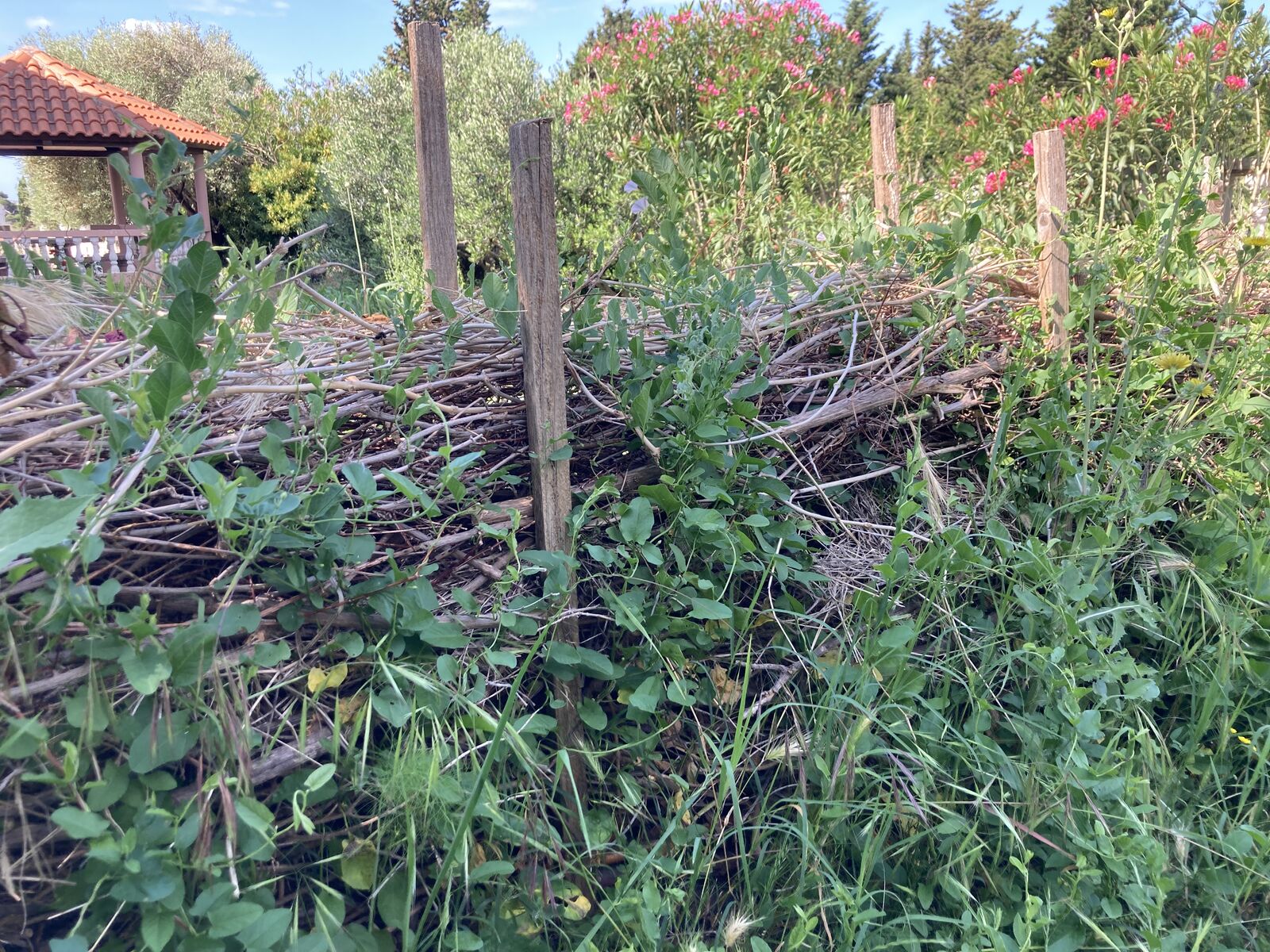
In the second step of creating a Benjes hedge, you can plant plants that will gradually green the hedge. In time, plants will grow by themselves, but you can also take the reins in your own hands. Again, native plants are best. On the one hand, ground cover plants that colonize the ground are suitable. On the other hand, climbing plants that grow up the Benjeshecke and thus green. But also vegetable plants, trees and shrubs can be integrated into the Benjes hedge. You have numerous possibilities. Some examples of greening your Benjes hedge, we now present.
| Shrubs & Trees | Climbing Plants | Ground Cover | Herbs & Flowers |
|---|---|---|---|
| Blackberry | Ivy | Alan | Columbine |
| Field maple | Dog rose | Aster | Nettle |
| Rock pear | Hops | Wild garlic | Wood anemone |
| Hornbeam | Kiwi | Mugwort | St John's Wort |
| Hazelnut | Cucurbits | Comfrey | Marjoram |
| Raspberry | Passion flower | Hawkweed | Viper's bugloss |
| Cornel cherry | Whistling bindweed | Creeping groundsel | Marigold |
| Blackthorne | Runner and fire beans | Snowdrops | Red foxglove |
| Hollyhock | Wood honeysuckle | Cranesbill | Forget-me-not |
| Hawthorn | Wild grape | Woodruff | Wild mallow |
Care Tips for Your Deadwood Hedge
In terms of maintenance, a deadwood hedge is not very complicated. However, I will tell you some tips on how to get the most out of your Benjes hedge for as long as possible, while preserving its ecological value.
- Regularly check whether the hedge is still stable and improve it if necessary. It can happen that the support stakes become loose or gaps appear due to the rotting process.
- Remove invasive or very competitive species on the Benjes hedge if it is very one-sided. Otherwise, this species will dominate your Benjes hedge and a great effect, biodiversity, will be reduced. If that's the case, you can target native plants to encourage biodiversity again.
- Especially at dry periods, it can help to water the hedge a little, so that the rotting process does not come to a standstill and to support its inhabitants.
- Over time, the material will decompose and you should add new deadwood, because it is especially important to have deadwood in different stages of decomposition in the Benjes hedge. This increases the biodiversity. However, decay takes different amounts of time depending on the wood: beech trees, for example, decompose much faster than oaks. Therefore, you should fill in the gaps with smaller wood and green cuttings annually, if necessary, and pile up new larger deadwood every three to five years.
For questions and comments, feel free to write us at magazin@fryd.app. Want to get helpful gardening tips throughout the year and plan your own beds for the best? Then register here or download the Fryd app for Android or iOSdownload.
Fryd - Your digital bed planner
Marie
Current Topics in the Community

#red , #tuesday
Show 1 answer
Liked 2 times
#testpostcount

Dec 2025
Popular Articles

Companion Plants for Carrots: What (Not) to Plant With Carrots

Companion Plants for Celery : What (Not) to Plant With Celery?

Strawberry Types: List of Best Strawberry Varieties

Companion Planting With Strawberries: Companion Plants and Planting Plan

Basil Varieties & Types at a Glance

What to Plant With Cabbage: Good and Bad Companion Plants

Fertilizing Strawberries: Home Remedies & Natural Fertilizers at a Glance

Growing Sweet Potatoes: Tips on Cultivation & Companion Plants

Companion Plants for Kitchen Herbs: Chives, Parsley & Co

What Herbs Can Be Planted Together?
FAQ
A Benjes hedge is a hedge made of deadwood, which is piled up from cuttings. It differs from a deadwood fence, because a Benjes hedge is still planted.
How can I plant my Benjes hedge?
You can either let your Benjes hedge grow wild, as plants will automatically colonize it over time. Alternatively, you can plant it with native ground covers such as wild garlic, climbing plants (e.g. kiwi, nasturtium), trees and shrubs (blackberry, raspberry) and vegetable plants.
Creating a deadwood hedge is quite simple: delimit the area with stakes and then fill the hedge first with coarse cuttings. On top then come thinner branches and round off the whole thing with leaves and green cuttings.
It is best to place your Benjes hedge in a location where it can serve as a windbreak, privacy screen or border. Note that a deadwood hedge can influence the microclimate, which is why it is often used in permaculture.